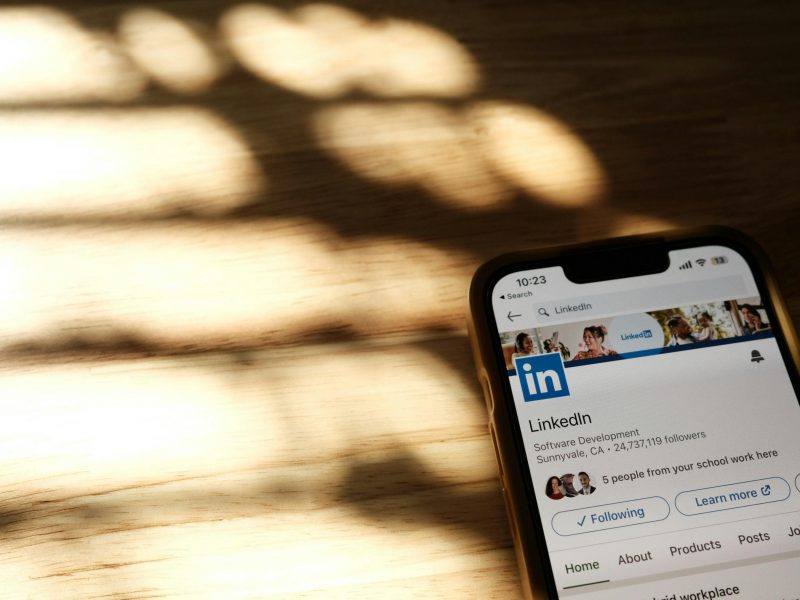LinkedIn has established itself as the preeminent social networking platform for professionals, boasting over 774 million members worldwide as of 2023. For businesses aiming to reach a highly targeted, professional audience, LinkedIn advertising presents a compelling opportunity. But are LinkedIn ads truly worth the investment? This question is crucial for marketers, business owners, and advertising professionals seeking to optimise their advertising budgets.
In this comprehensive analysis, we will explore the benefits, challenges, cost structures, and effectiveness of LinkedIn ads. We’ll also provide insights into best practices and strategies for maximising return on investment (ROI) on the platform.
Understanding LinkedIn Ads
LinkedIn offers several types of ad formats, each designed to serve different marketing objectives. These formats include:
- Sponsored Content: Native ads that appear directly in the LinkedIn feed.
- Sponsored InMail: Personalised messages delivered to LinkedIn inboxes.
- Text Ads: Simple but effective ads displayed on the sidebar.
- Dynamic Ads: Personalised ads that adapt to the profile of the viewer.
- Video Ads: Engaging video content to capture user attention.
- Carousel Ads: Ads with multiple images or videos that users can swipe through.
Each of these formats has unique advantages, and selecting the right type depends on your specific marketing goals, whether they be brand awareness, lead generation, or engagement.
The Benefits of LinkedIn Ads
1. Highly Targeted Audience
LinkedIn’s targeting capabilities are among its most significant advantages. The platform allows advertisers to target users based on a range of professional criteria, including job title, industry, company size, seniority, and skills. This granularity ensures that your ads are seen by the most relevant audience, increasing the likelihood of engagement and conversion.
2. Professional Context
Unlike other social media platforms where users are primarily in a personal or entertainment-focused mindset, LinkedIn users are generally in a professional context. This environment means users are more receptive to business-related content, making LinkedIn an ideal platform for B2B marketing.
3. Lead Generation Capabilities
LinkedIn is particularly effective for lead generation. With tools like LinkedIn Lead Gen Forms, which allow users to submit their contact information without leaving the platform, businesses can capture high-quality leads with minimal friction. These forms pre-fill data from the user’s LinkedIn profile, increasing submission rates and improving the quality of the leads generated.
4. Enhanced Analytics and Insights
LinkedIn provides robust analytics and insights, enabling advertisers to track the performance of their campaigns in detail. Metrics such as click-through rates (CTR), conversion rates, and engagement metrics help marketers refine their strategies and improve ROI over time.
5. Content Marketing Synergy
LinkedIn ads can complement your organic content marketing efforts. By promoting high-quality content through Sponsored Content or Sponsored InMail, you can boost the visibility of your posts and enhance your overall content marketing strategy.
The Challenges of LinkedIn Ads
Despite the numerous benefits, there are several challenges associated with LinkedIn advertising that marketers should be aware of:
1. Higher Cost Per Click (CPC)
One of the most commonly cited drawbacks of LinkedIn ads is their cost. LinkedIn typically has a higher CPC compared to other platforms like Facebook or Google Ads. This higher cost can be a barrier for small businesses or those with limited advertising budgets.
2. Competition for Attention
While LinkedIn’s professional context is a benefit, it also means that users are often bombarded with numerous ads and messages. Cutting through this noise to capture attention can be challenging, requiring highly compelling and relevant ad creative.
3. Learning Curve
Effectively leveraging LinkedIn’s advertising platform can require a steep learning curve. Understanding how to use the targeting options, bidding strategies, and ad formats effectively takes time and experimentation. For businesses without dedicated advertising expertise, this can be a significant hurdle.
Cost Structures and Budgeting
The cost of LinkedIn ads can vary widely based on several factors, including your targeting criteria, industry, and the competitiveness of your desired audience. However, it’s essential to understand the primary cost structures involved:
1. Cost Per Click (CPC)
With CPC, you pay each time someone clicks on your ad. This model is often used for driving traffic to a website or landing page. On LinkedIn, CPC can range from £2 to £6 or more, depending on the targeting options.
2. Cost Per Impression (CPM)
With CPM, you pay for every 1,000 impressions (views) of your ad. This model is ideal for campaigns focused on brand awareness. LinkedIn’s CPM rates can range from £6 to £20 or higher, depending on the audience and competition.
3. Cost Per Send (CPS)
Sponsored InMail campaigns use a Cost Per Send model, where you pay each time a message is delivered to a user’s inbox. CPS rates can range from £0.30 to £1 or more, depending on the targeting criteria.
4. Budgeting Strategies
To effectively manage your LinkedIn ad spend, it’s crucial to set a clear budget and monitor your campaigns closely. Start with a modest daily or monthly budget and scale up as you gain insights into what works best for your audience. Regularly review your ad performance and adjust your targeting, creative, and bidding strategies to optimise your spend.
Measuring Effectiveness
Determining the effectiveness of LinkedIn ads requires careful analysis of key performance metrics. Here are some essential metrics to consider:
1. Click-Through Rate (CTR)
CTR measures the percentage of users who click on your ad after seeing it. A higher CTR indicates that your ad is resonating with your audience. LinkedIn’s average CTR varies by industry but typically ranges from 0.4% to 0.65% for Sponsored Content.
2. Conversion Rate
Conversion rate measures the percentage of users who complete a desired action, such as filling out a lead form or downloading a whitepaper. Tracking conversions helps determine the ROI of your campaigns.
3. Cost Per Conversion
This metric calculates the cost of acquiring a conversion and is crucial for evaluating the efficiency of your ad spend. A lower cost per conversion indicates a more effective campaign.
4. Engagement Metrics
Metrics such as likes, comments, and shares provide insight into how well your content is engaging your audience. High engagement can amplify your ad’s reach and impact.
Best Practices for LinkedIn Advertising
To maximise the value of your LinkedIn ad campaigns, consider these best practices:
1. Define Clear Objectives
Before launching a campaign, establish clear objectives. Are you aiming to increase brand awareness, generate leads, or drive traffic to your website? Clear goals will guide your strategy and help you measure success.
2. Leverage Advanced Targeting
Take full advantage of LinkedIn’s targeting options to reach the most relevant audience. Use criteria such as job title, industry, company size, and skills to narrow down your audience and improve ad relevance.
3. Craft Compelling Ad Creative
Invest time in creating compelling ad creative that captures attention and conveys your message effectively. Use high-quality images, clear and concise copy, and strong calls-to-action (CTAs) to drive engagement.
4. Test and Optimise
Continuously test different ad variations, targeting options, and bidding strategies to identify what works best. A/B testing can help you refine your approach and improve performance over time.
5. Monitor and Adjust
Regularly monitor your campaign performance and make adjustments as needed. Use LinkedIn’s analytics tools to track key metrics and gain insights into your audience’s behaviour.
Case Studies: Success with LinkedIn Ads
Case Study 1: A B2B SaaS Company
A B2B SaaS company used LinkedIn ads to promote a new software product targeting mid-level IT managers in the healthcare industry. By leveraging LinkedIn’s targeting options, the company was able to reach a highly specific audience. They used Sponsored Content to share valuable whitepapers and case studies, combined with LinkedIn Lead Gen Forms to capture leads. The campaign achieved a CTR of 0.7% and a conversion rate of 5%, resulting in a substantial number of high-quality leads.
Case Study 2: A Professional Services Firm
A professional services firm aimed to increase brand awareness and generate leads among decision-makers in the finance sector. They used a mix of Sponsored Content and Sponsored InMail to reach their audience. The Sponsored InMail messages, personalised with the recipient’s name and company, had an open rate of 60% and a response rate of 10%. The campaign effectively positioned the firm as a thought leader and generated several high-value leads.
Conclusion
So, are LinkedIn ads worth it? The answer depends on your business goals, target audience, and budget. For B2B companies and those aiming to reach a professional audience, LinkedIn ads can be highly effective despite the higher cost per click. The platform’s robust targeting capabilities, professional context, and lead generation tools make it a valuable addition to your digital marketing strategy.
However, success with LinkedIn ads requires careful planning, testing, and optimisation. By understanding the platform’s strengths and challenges, defining clear objectives, and leveraging best practices, you can maximise the ROI of your LinkedIn ad campaigns and achieve your marketing goals.
In the ever-evolving landscape of digital advertising, LinkedIn continues to offer unique advantages for businesses looking to connect with professionals. With the right approach, LinkedIn ads can be a powerful tool in your marketing arsenal, driving meaningful results and helping you achieve your business objectives.



